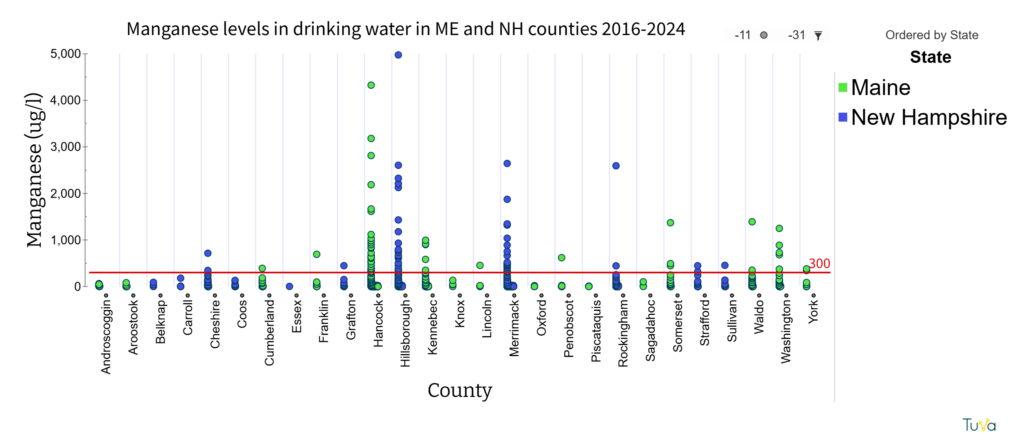Why Manganese is a problem
The EPA has set a National Secondary Drinking Water Regulation for Manganese of 50 µg/L. “When manganese is present in drinking water at levels above the secondary maximum containment level, it may cause a black or brown appearance, black staining, or a bitter metallic taste. While not harmful to public health, these noticeable effects may cause people to stop using water from their public water system.”
1. Explore “Manganese: A Double-edged Sword” StoryMap

Manganese: A Double-edged Sword StoryMap explores various aspects of manganese. While manganese is crucial for a healthy body, it’s a “double-edged sword” as chronic high levels may lead to a neurological disorder similar to Parkinson’s Disease.
2. Review Fact Sheets from New Hampshire and Minnesota
It is interesting to note that different states provide slightly different guidance on manganese in drinking water. A fact sheet from the Minnesota Department of Health recommends that the limit should be 0.1 mg/L (100 ppb) if an infant is drinking water or infant formula is made with water from the household. For households where infants are not drinking the water, or everyone is over one year old, the recommendation is 300 ppb, which is the EPA’s health recommendation. New Hampshire has a fact sheet with different guidance for manganese in drinking water.
“Over the long-term, consumption of water by the general population containing levels of
manganese above 0.3 mg/L is not advisable. Infants up to 12 months of age should not be given water with
manganese concentrations greater than 0.3 mg/L for more than a total of 10 days per year, nor should the
water be used to make formula for more than 10 days per year. Treatment to remove manganese should be
installed or an alternate source of drinking water, such as bottled water, should be utilized when manganese in
your drinking water is above 0.3 mg/L.”
What are the similarities and differences between fact sheets from different states? Which guidance should people follow? Students can explore these and other questions as they consider messages they want to share with their communities.
3. Explore the manganese data in our Tuva drinking water dataset
All the drinking water data generated in the SEPA project can be found on our custom Tuva platform at arsenicdata.tuvalabs.com. High manganese (above the 300 ppb health limit set by EPA) are concentrated in a few counties across Maine and New Hampshire. What is different about these counties? What health messages do we want to send to residents in these locations?
